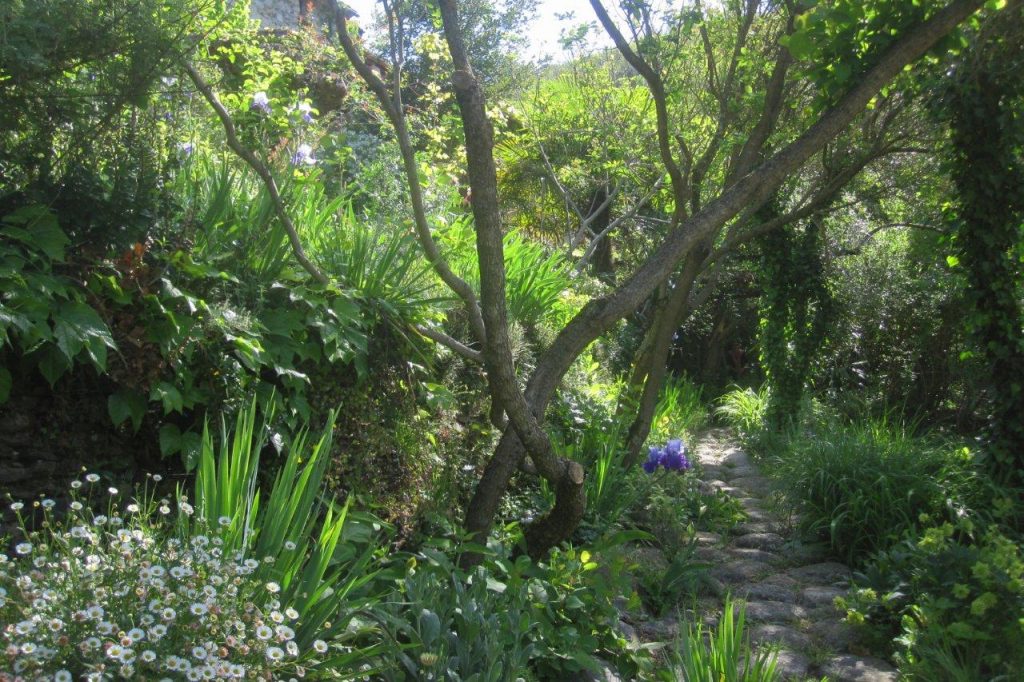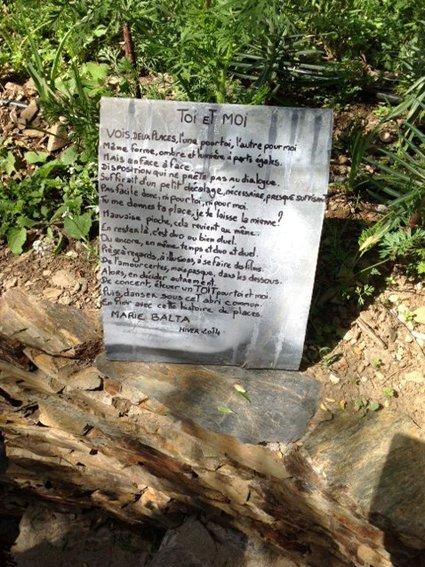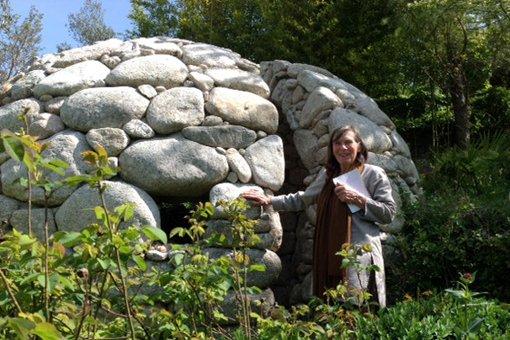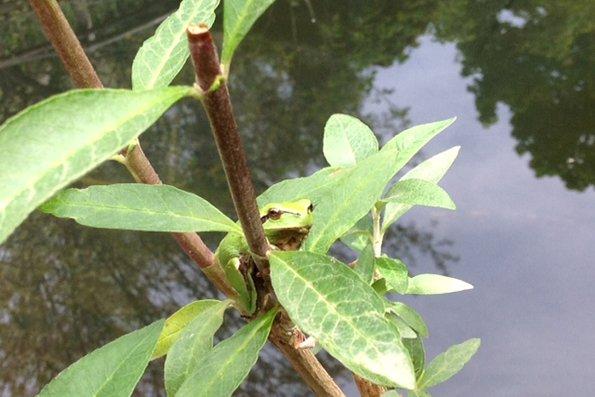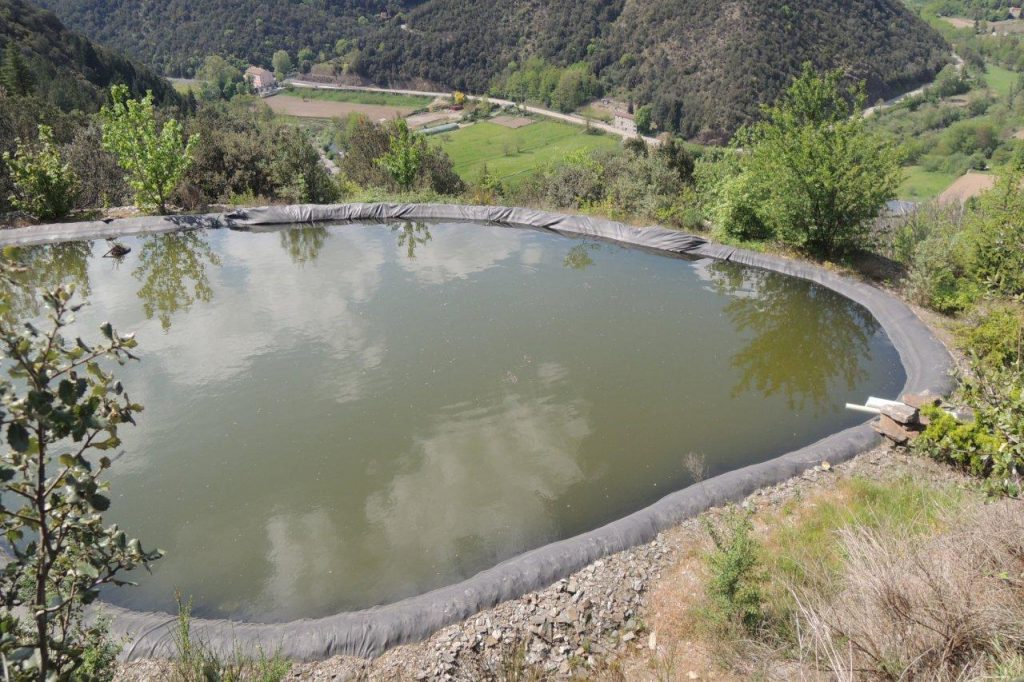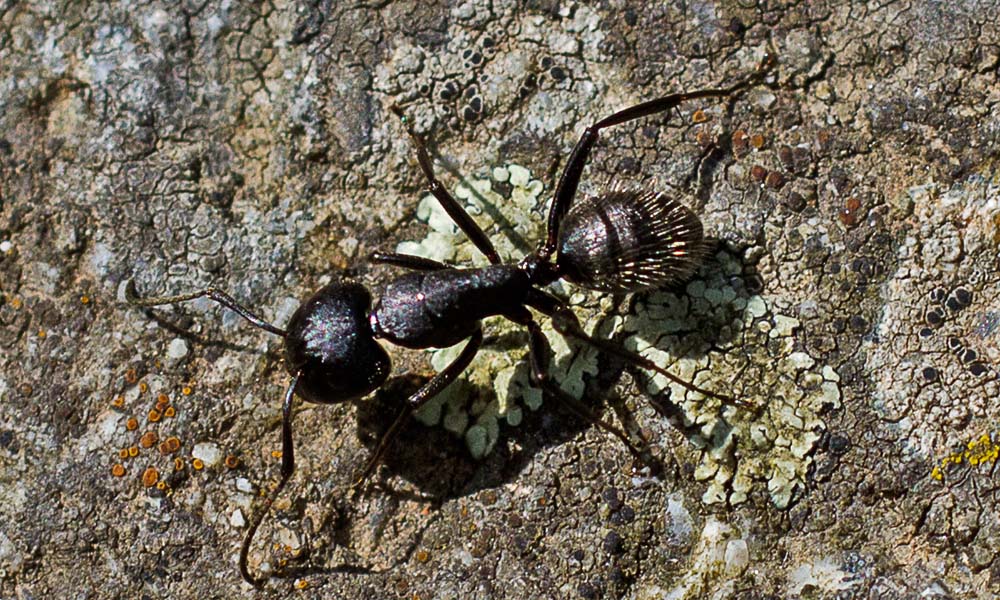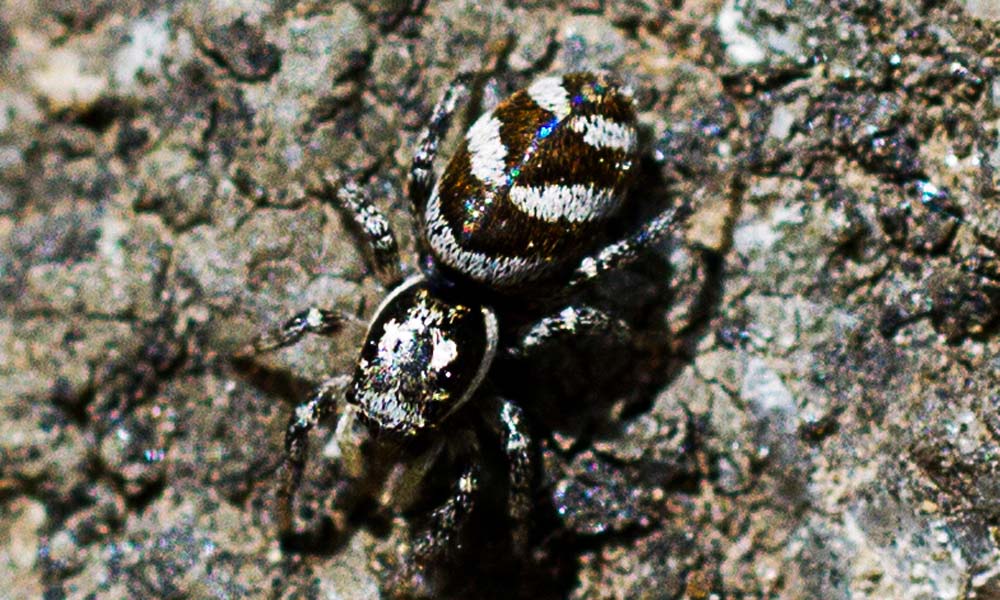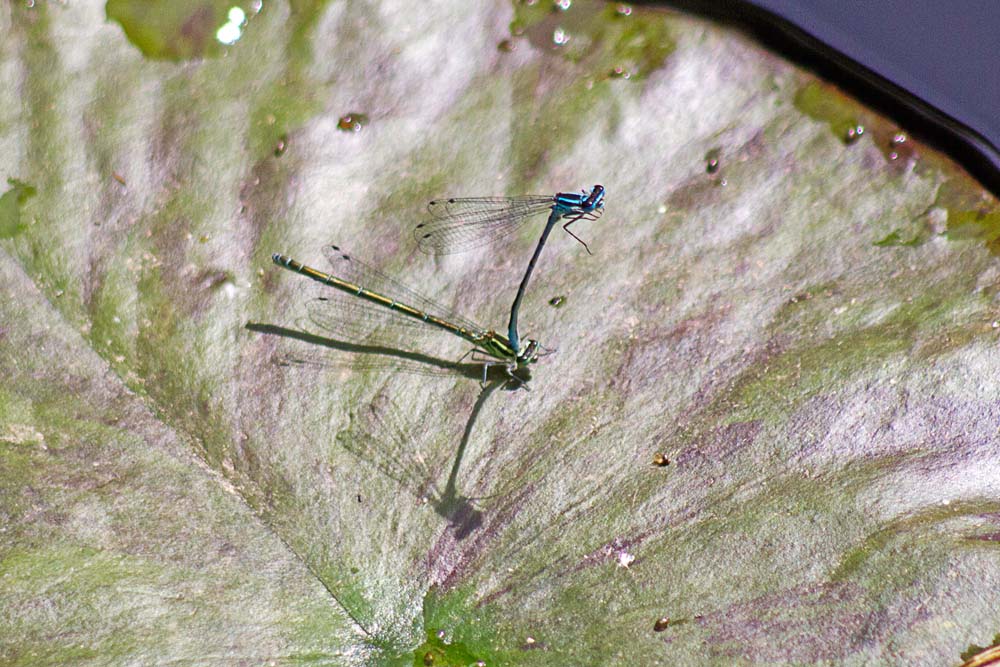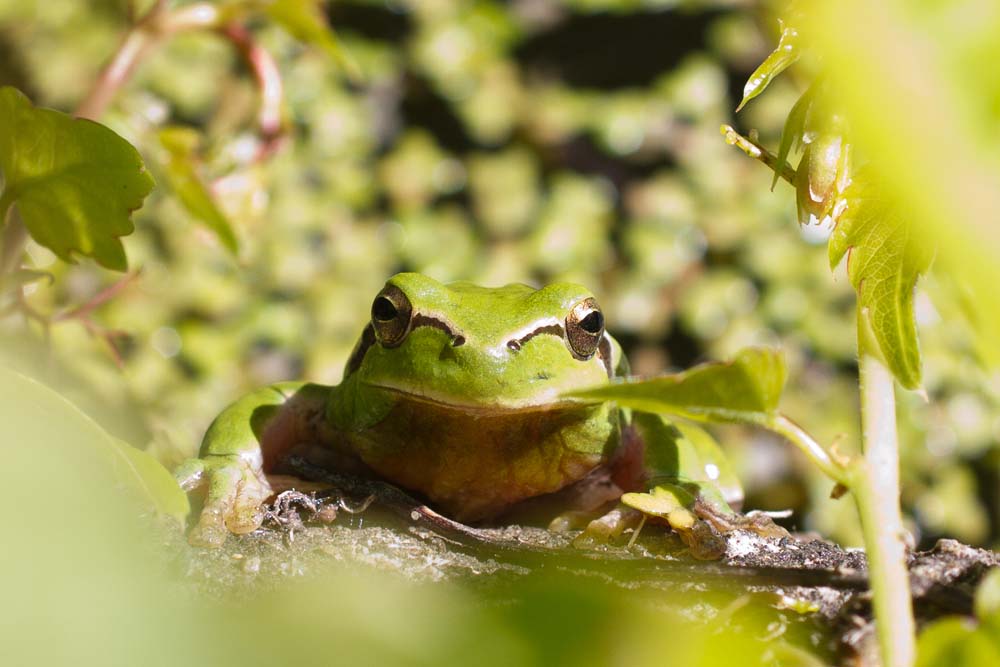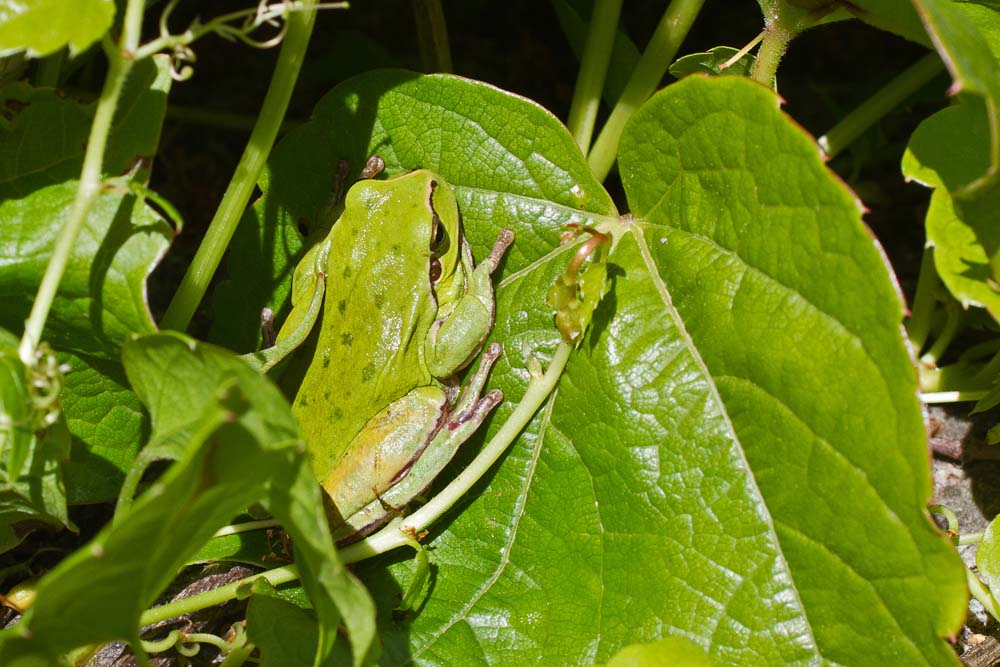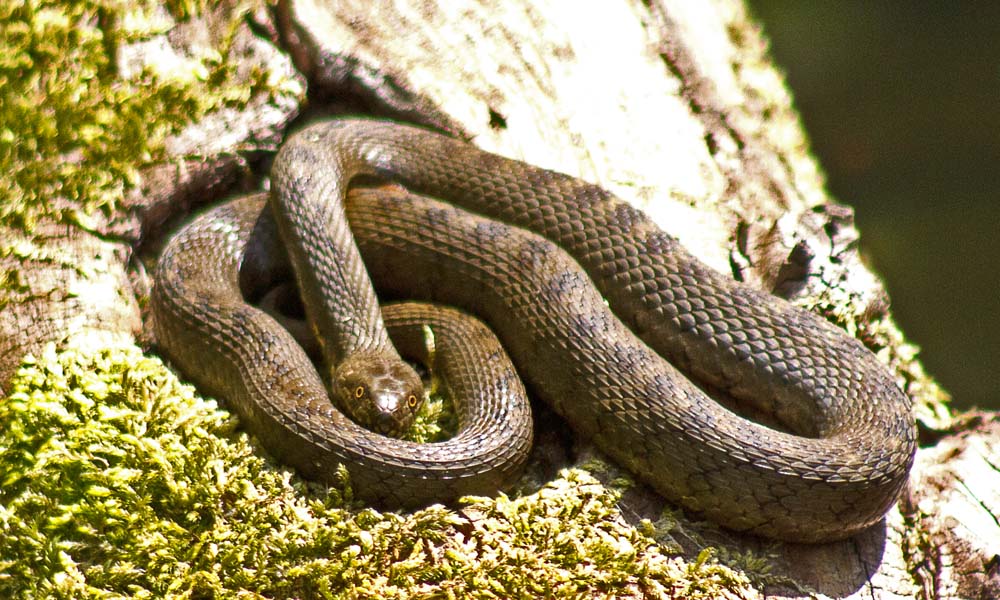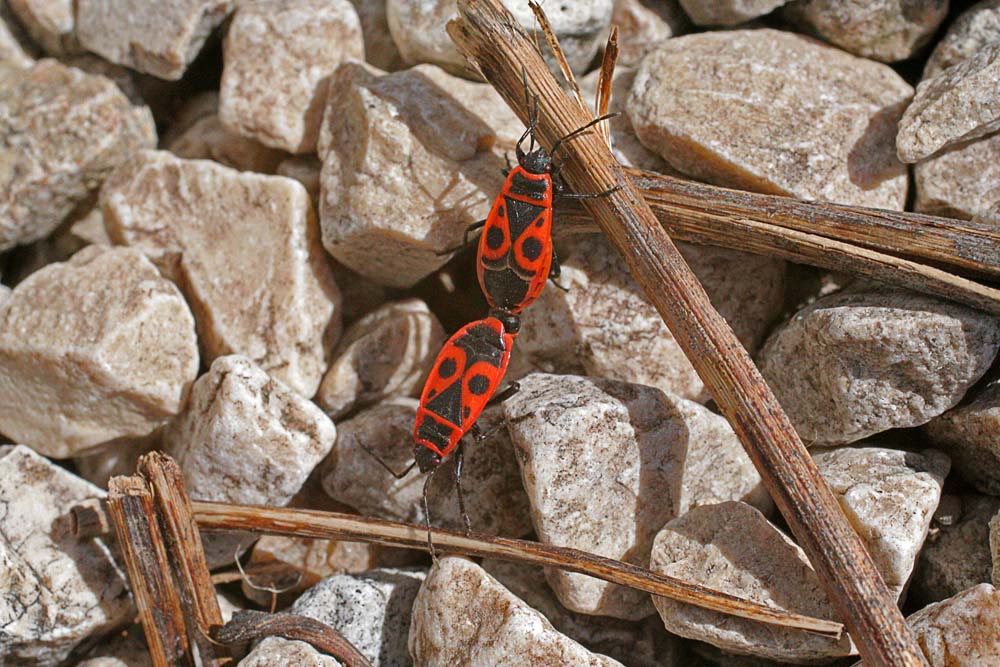April / avril 2014 – Le Jardin des Sambucs: ‘un jardin pas comme les autres’
Click on the images to enlarge them / Cliquez sur les images pour les agrandir
We gathered at the garden on a beautiful sunny April morning, a wonderful time to be there, as the plants were freshly green and soft and not yet roasted by the summer sun. Some members had enjoyed an overnight stay, while others had the pleasure of driving deep into the volcanic terrain of the Cévennes to this unusual venue.
The garden is a haven of tranquility, almost a private world, symbolic of the secret traditions and history of the Cévennes. The owners were said to be soixante-huitards, which gave an extra touch of nostalgia.
It’s a wild garden, reminiscent of tropical rain forest in its ambience, with plants allowed to run freely and seed where they will, lots of water features and sounds of water everywhere. There are many amusing touches and many examples of trompe l’oeil. There were little signs here and there, bearing the romantic names of different parts of the garden and guiding one to sense the atmosphere that the owners were wishing to convey. There were poems too and lots of whimsy. The most dramatic feature was a trail of stoves randomly tumbled down the hillside, allegedly ejected from the house during a meteorite strike during the night after the owners attended a talk on climate change!
The garden’s ambience was a very natural feel but this belied the many years of hard work that had been and are still being devoted to this garden. It’s a work of passion and humour. The owners are reaching a certain age. For not too much longer will they bring up large granite boulders from the valley floor to build the stone features. These solid granite igloos though not liked by all were fascinating, making a strong physical presence amid the softness of the foliage.
A useful feature was a number of giant birds’ nests, each with a large stone egg inside. They are in fact compost heaps; the stone helping to anchor and compress the compost. It really makes sense in a garden of this size to be able to park garden debris at regular intervals. Many of us lingered long around the pools and ponds which were full of creatures. Frogs abounded, beautifully camouflaged amongst the greenery, though at night in June they are so noisy that they hurt the ears. Lotus flowers do well here, having a soil depth of 50cm, plus 50 cm of water.
The water features were fascinating. Looking up from the water, it was a marvelous contrast to see the different layers of vegetation on the steep hillside. We were shown how honeysuckle not liking its metal support had scampered through endless adjacent trees and shrubs. Roses too were exuberant, crossing the levels with enthusiasm and impunity.
We had a satisfying organic vegetarian lunch in a shady dell, then walked up to see the system used by the owners for the capture of water, allowing them a use of 25 to 30 cubic metres daily, in addition to ‘town water’. The conservation of rainfall has long been practiced in the Cévennes and we were shown water ‘mines’, created by locals digging into the hillside to find water, then conserving it for later use.
Nicholas emphasised forcefully the difference between water management, which is practiced here, and economic use of water, which was another topic entirely. All of the water here has come from the heavens and stays naturally sweet, unlike hoarded tap water which can develop an unpleasant stagnant smell. There can be as much as 300 cm of rain in a night. We were shown the two huge pools, one higher than the other lined with EPD which allows air but not water to pass through. It is notable how water conservation methods are now becoming mainstream and essential.
It was an interesting visit, some liking the garden and ideas more than others. An important element was putting plants and creatures first, an ideal for all of us to keep in mind when tending our gardens. Nicholas and Agnes’ Brückin’s garden is truly ‘un jardin pas comme les autres‘.
Text: Julia Petty
Photographs: Graham Petty
Earth, Wind, Water and Fire
The Four Elements at the Jardin des Sambucs
The ancient Greeks thought that all Nature was made from four elements: earth, wind, water and fire. Well, as we discovered during our visit, there is plenty of Nature present in the four elements at the Jardin des Sambucs
Representing Earth, a large colony of carpenter ants as long as your finger nail and dwarfing a tiny but beautifully decorated zebra spider.
In the air, or rather in a nearby tree, a nightingale (the Rarely Spotted variety) issued a non-stop commentary on Agnès’s explanation of the garden, while crag martins zoomed in and out at low level like the Patrouille de France. Lower down the aerial scale, there were butterflies: little brown ones that never stopped long enough to be identified, Small Whites, Scarce Swallowtails and lots of Orange Tips (although a trick of the light has made this one look like an Orange-and-Lemon Tip).
Linking air to water, a Black-tailed Skimmer dragonfly hovered briefly over one of the many pools, while this pair of Azure Bluet damselflies remind us that Spring has truly sprung, the blue male guarding his mate as she lays her eggs.
On the water, taking advantage of surface tension, dozens of Pond Skaters ran about, while in it roamed the sinister Common Backswimmer (or water boatman) who, as Nicholas explained, swims upside down to escape detection by predators from below; its iridescent back making it invisible against the sunlight. Grand amateur of mosquito larvae, it will also have a go at your finger if you let it!
The two most popular wildlife sights during our visit link water to earth. First, the Tree Frogs, swimming through the weed on one of the ponds or clinging to leaves at its side.
For many, however, the pièce de résistance was a viperine water snake which looks and behaves just like a viper – but is not poisonous. It lay on a log like a piece of discarded rope, taking advantage of the midday sun before, tired of all the clicking cameras, tablets and mobile phones, it stretched itself out and slid off into the water.
And Fire? Over lunch Christine described to us James Basson’s award-winning garden ‘After the Fire’ – but that doesn’t really count. However, in the afternoon, as we trudged our way up the hill to see the ‘Eau des Collines’, our path was crossed by dozens of pyrrhocoris apterus, what the French call ‘gendarmes’ and the English: ‘fire bugs’. Many were conjoined, the unlucky spouse being obliged to trundle over the stony terrain backwards.
Do the males drag the females or vice versa? Who knows? Perhaps, like TGVs, they take turns to be the front and back end of the train.
Text: Ian Davis
Photographs: Ian Davis & Michèle Bailey
![]()

